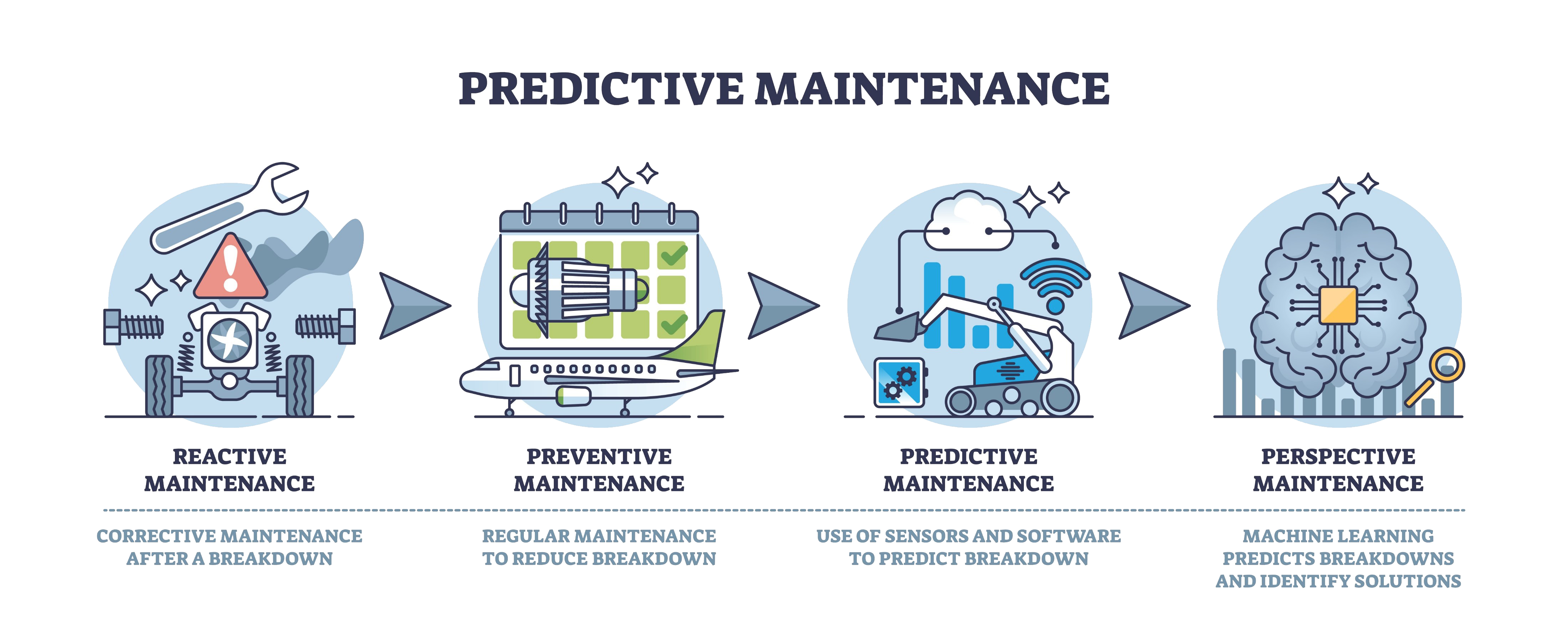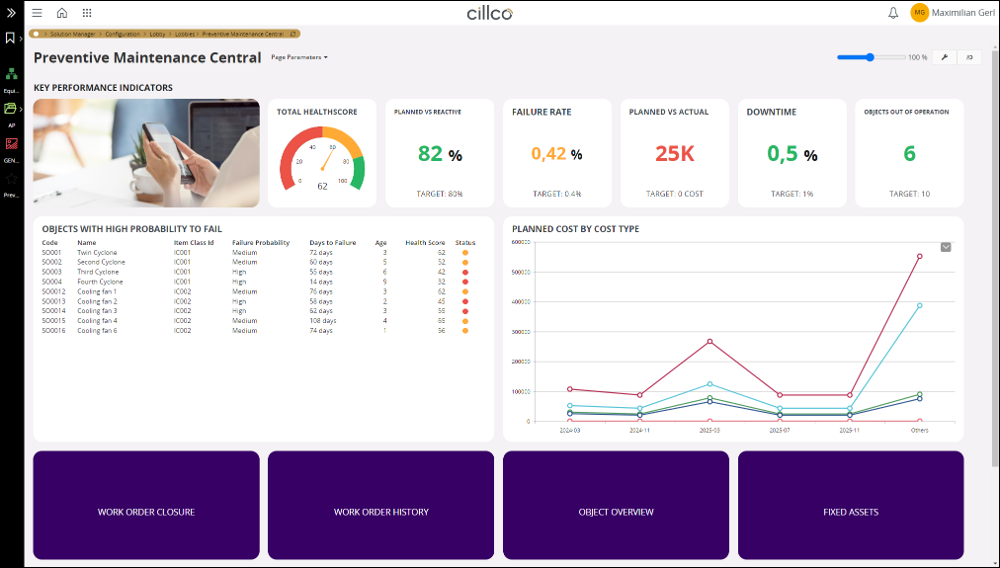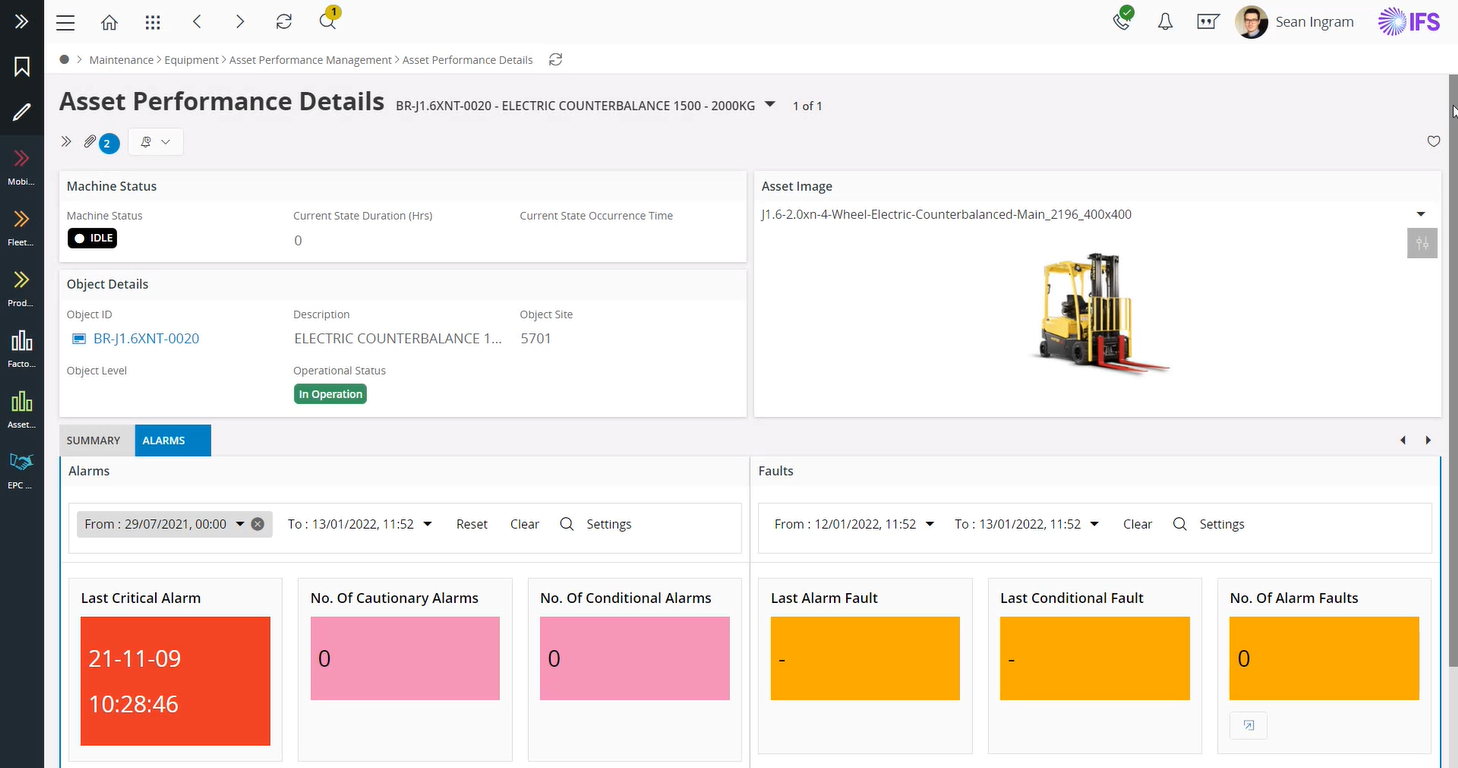3 min read
Reducing costs with predictive maintenance in IFS cloud
Maximilian Gerl
Dec 19, 2023 3:39:16 PM

Utilizing innovative technologies
Planning maintenance activities has been an important topic within asset-heavy industries over decades. Equipment, such as machines in a production plant, turbines that are used to produce electricity or a fleet of mobile construction equipment can be essential for a company’s core operations. Even though the type of assets and the challenges within maintenance that come with it can vary a lot between industries, it is important for all companies to prevent critical assets from an unplanned breakdown.
Repairs due to machine failure, also known as corrective or reactive maintenance, can be cost intensive and decrease the productivity per assets due to a longer downtime. Limited availability of required parts, a lack of technicians with the right competences or overtime costs for technicians that should perform the work outside regular working hours can be reasons for that. It is therefore crucial to avoid unplanned maintenance by utilizing the power of predictive maintenance through innovative technologies and solutions.
Preventive maintenance approaches
Traditional preventive maintenance strategies are often usage-based or time/calendar -based. That means that preventive maintenance actions for a machine are scheduled based on fixed intervals, for example after every 1000 hours of operating time or every fourth week. Another type of preventive maintenance can be event-based. In this case, preventive maintenance work is triggered by certain events such as a factory shutdown or a power failure in a production plant.
Preventive maintenance is essential for many companies and if implemented correctly, it can significantly reduce costly reactive maintenance and unplanned downtime, extend the assets life and increase productivity. However, preventive maintenance also has certain limitations since the pre-set intervals can be inexact. This can lead to that preventive maintenance work for a machine is performed, which is actually not needed. A construction machine for example that is only used under perfect conditions might need less maintenance than a machine of the same type that is used intensively for tasks that cause heavy wear.
Transformation from preventive to predictive maintenance
In the last years a new approach evolved from preventive maintenance that continues to increase in popularity. It is a result of advancements in technology, data analytics and the interconnectivity of assets, also known as Internet of Things (IoT). The so-called predictive maintenance strategy focuses on machine data gathered by sensors, to determine the condition of the asset and to predict when maintenance for a machine is needed. Parameters that can be used to define the condition of a machine could for example be temperature, vibration frequencies, emissions, or the results from oil analysis.

A predictive maintenance approach can have a huge impact on productivity and maintenance costs. According to Deloitte, asset downtime can be reduced by 15 % and labor productivity can be increased to up to 20 %. By predicting when preventive maintenance is needed, inventory levels for spare part warehouses can also be reduced, which can lead to up to a 20 % reduction of carrying costs. Besides hard facts like an increase in productivity and cost reductions, arguments like better working hours for technicians due to a better predictability of when maintenance is needed must be considered as well.
IFS Cloud predictive maintenance capabilities
Choosing the right digital platform when implementing a proactive maintenance approach is essential. IFS Cloud is an ERP and EAM system, that provides a centralized platform for managing thousands or even millions of connected assets and optimizing maintenance activities. IFS Cloud offers out-of-the box preventive, reactive and predictive maintenance functionality, built on a sophisticated data model that allows your organization to scale. The open API architecture IFS Cloud is using allows a seamless connection with all assets in your organization and enables real-time analytics in order to make the right decisions.
IFS Cloud offers a lot of configuration capabilities that makes it possible to meet the specific needs of different industries and organizations. The IFS Cloud rule automation engine can identify assets that exceed defined maintenance thresholds and make them visible to the relevant users through interactive dashboards:

Different key metrics, like for example a general asset health score, failure probability or predicted days to failure can be defined, that tell the maintenance responsible, which assets need to be taken care of or even automatically trigger the creation of a workorder. Once these machines are identified with the help of dashboards and lists in IFS Cloud, the user can easily navigate to a detailed overview of an individual asset for more information or to take further action.

Conclusion
Nowadays, Industry 4.0. and IoT is not just a hype anymore. Evolving technology made it possible to collect extensive amounts of data. The benefits and cost-saving potential that result from analyzing and monitoring machine data in real time are undeniable. Combining predictive maintenance with artificial intelligence has an enormous potential and can enhance effectiveness of predictive maintenance even more. However, utilizing the advantages of predictive maintenance is not possible without having the right solutions as a fundament. It is time to let your assets talk to you and unleash the power of predictive maintenance in your organization!
Want to know more about IFS Cloud or Predictive Maintenance? Please contact us.


